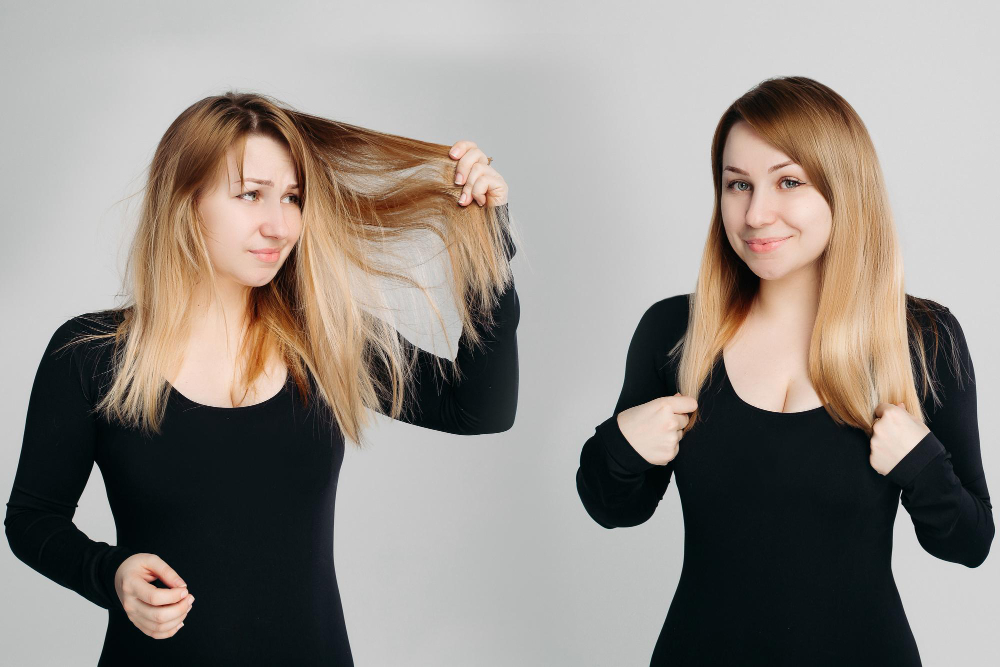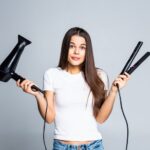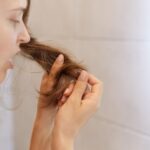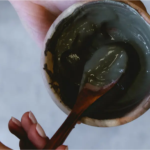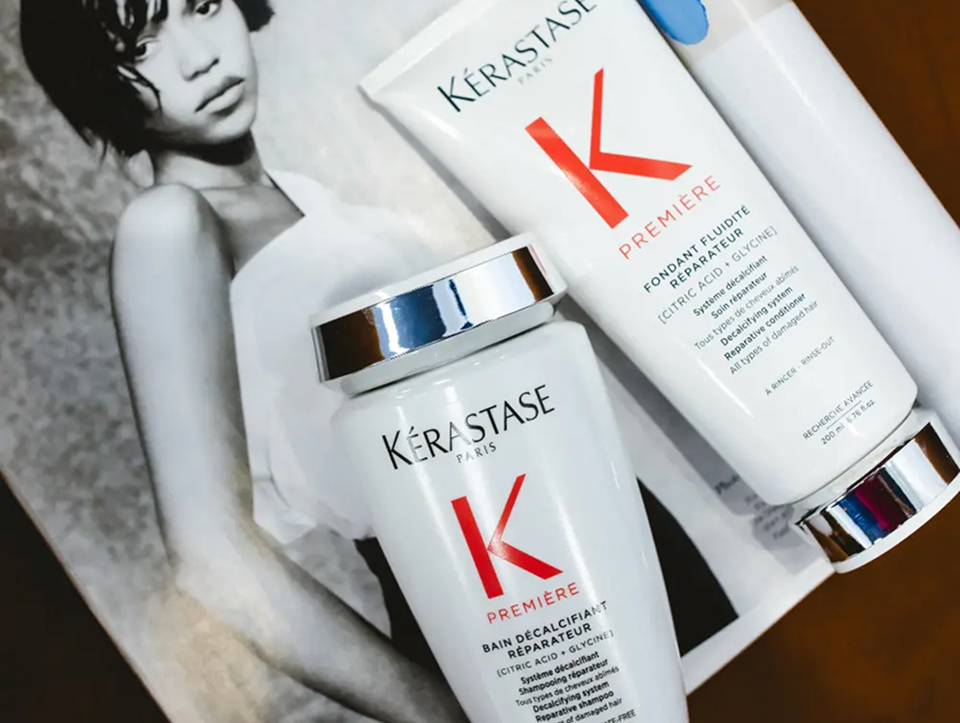Healthy vs unhealthy hair can look and feel very different, and knowing the signs is key to achieving strong, shiny, and manageable strands.
Tired of dull, dry, or brittle hair that won’t behave? Understanding how to spot the difference between healthy and unhealthy hair helps you prevent breakage, reduce frizz, and restore your hair’s natural vitality.
Whether your hair is naturally curly, color-treated, or prone to dryness, learning the characteristics of healthy vs unhealthy hair is the first step toward transformation.
Healthy vs Unhealthy Hair: What’s The Difference?
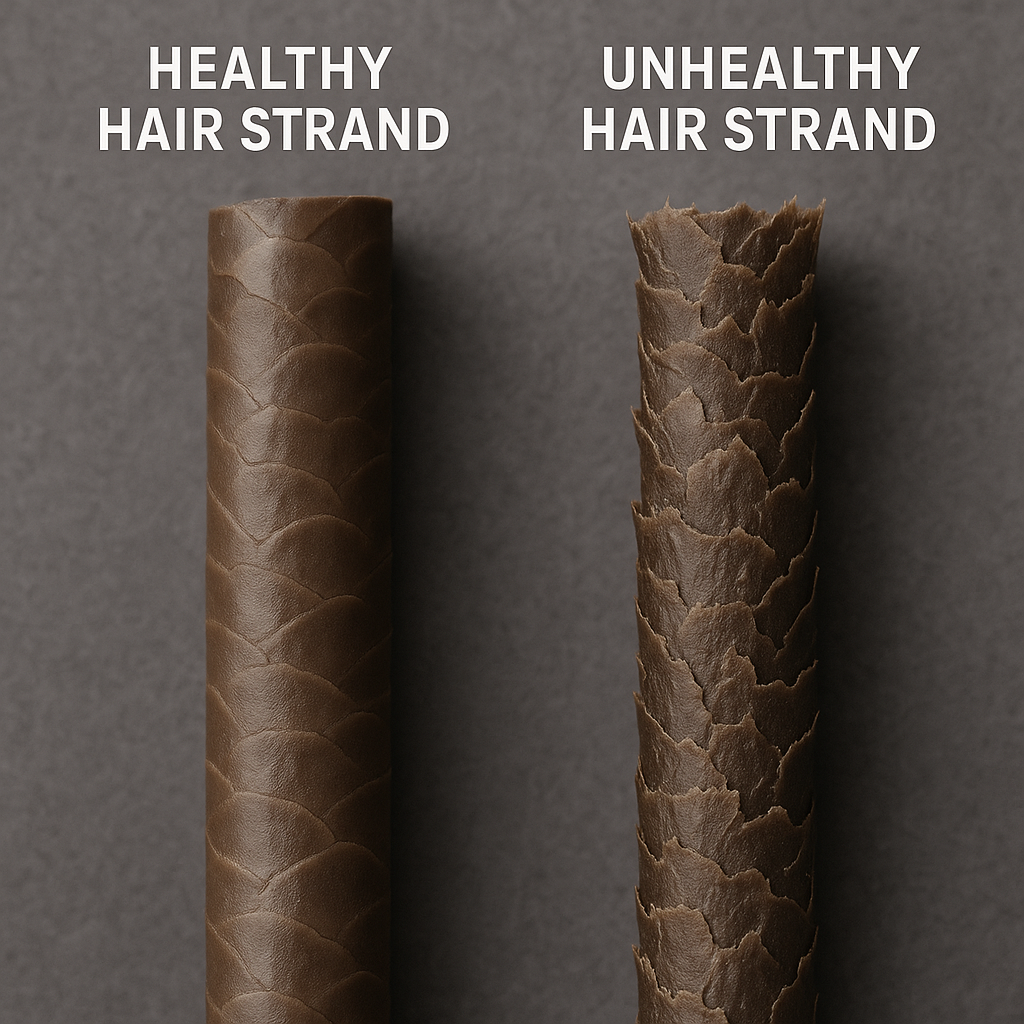
What Is Healthy Hair?
Healthy hair is strong, hydrated, and resilient, with a smooth cuticle, balanced scalp, and minimal breakage. Key features include:
- Shine & Smoothness: Reflects light, feels soft to the touch
- Elasticity & Strength: Can stretch slightly without breaking
- Healthy Scalp: Balanced oils, no dryness, itchiness, or flaking
- Minimal Split Ends: Hair ends are intact and robust
- Strong Follicles: Roots hold strands securely for consistent growth
💧 Tip: Learn more about keeping your scalp nourished and hair strong with our diet and scalp health guide.
What Is Unhealthy Hair?
Unhealthy hair often shows visible signs of damage. Common characteristics include:
- Dryness & Brittle Texture: Feels rough or straw-like
- Split Ends & Breakage: Frayed tips and hair snapping easily
- Dull, Lifeless Strands: Lacks natural shine
- Scalp Issues: Oily, flaky, or inflamed scalp
- Slow or Uneven Growth: Weak follicles may result in thinning
⚠️ Dry, frizzy, or brittle strands are often early indicators that your hair needs attention.
💧 Tip: Over-styling, heat tools, chemical treatments, and environmental stressors (sun, chlorine, pollution) are common causes. Learn more about protecting treated hair with our Color Melting Hair guide.
Healthy Hair vs Unhealthy Hair: Side-by-Side
| Feature | Healthy Hair | Unhealthy Hair |
| Appearance | Shiny, smooth, and reflective | Dull, rough, and lifeless |
| Texture | Soft and silky to the touch | Dry, brittle, or overly greasy |
| Elasticity | Stretches slightly and returns to shape | Snaps easily with little tension |
| Moisture Balance | Evenly hydrated from root to tip | Dry ends, oily roots, or overall lack of moisture |
| Strength | Resilient to brushing and light heat styling | Breaks easily during styling or detangling |
| Split Ends | Minimal or none with regular trims | Visible and frequent split ends |
| Frizz Control | Manages humidity well with smooth cuticles | Prone to frizz and flyaways |
| Tangles & Knots | Easy to detangle, less prone to knots | Frequently tangled, hard to comb through |
| Scalp Health | Balanced, clean scalp with minimal flaking or itching | Flaky, itchy, or excessively oily/dry scalp |
| Styling Response | Holds styles well, smooth finish | Styles don’t hold, appear limp, or are damaged |
| Color Retention | Maintains hair color longer with minimal fading | Color fades quickly and unevenly due to damage |
💡 Tip: Perform a strand test: gently stretch a strand; healthy hair bounces back, while damaged hair snaps easily. While you are here, also check out some tips to keep your hair looking great with an active lifestyle.
Common Causes of Hair Damage

Understanding what harms your hair is essential to preventing unhealthy hair and keeping your strands strong, shiny, and resilient. Here are the most common contributors to damage and how to protect your hair:
Heat Styling
Frequent use of straighteners, curling irons, and blow-dryers can strip hair of moisture, weaken the cuticle, and lead to breakage over time. Even moderate heat can cause frizz, split ends, and color fading if not paired with protective products. Always use a heat protectant and try to limit daily styling.
Chemical Treatments
Bleaching, coloring, relaxers, and perms alter the natural structure of your hair. While these treatments can achieve gorgeous results, they also make strands more porous and prone to dryness, breakage, and frizz. Regular conditioning and protein treatments can help counteract this damage.
Environmental Damage
Sun exposure, pollution, and chlorinated water can all weaken hair over time. UV rays can break down proteins in the hair shaft, while chlorine and saltwater strip natural oils. Protect your strands by wearing a hat, using UV-protectant sprays, and rinsing hair after swimming.
Poor Hair Care Habits
Over-washing, using harsh shampoos with sulfates, or skipping regular trims can all contribute to unhealthy hair. Hair becomes brittle, dull, and more prone to split ends. Gentle routines, including sulfate-free products and protective care, are essential.
🧴 Tip: For gentle cleansing without stripping your natural oils, explore our co-washing guide and learn how to choose the right products in our scalp vs hair serum guide.
How to Identify Healthy vs Unhealthy Hair

- Visual Inspection: Shine, smoothness, elasticity, and frizz level
- Scalp Check: Oil balance, dryness, itchiness, or flakes
- Hair Strand Test: Stretch a strand — healthy hair stretches slightly, unhealthy hair snaps
- Growth Observation: Uneven growth or frequent breakage indicates damage
💡 Tip: Track changes over time — even subtle dullness or dryness is an early sign of unhealthy hair, but if you’re not sure, visit us at Haste Urban Hair Spa in Boston.
How to Restore Unhealthy Hair
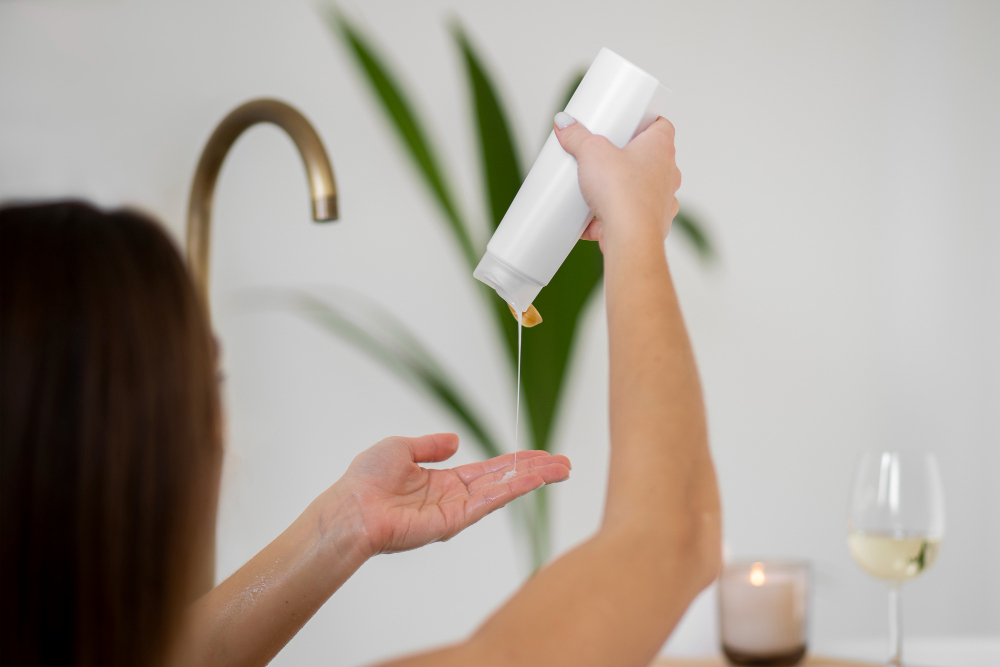
You can improve the condition of unhealthy hair with the proper care routine:
- Moisturize & Nourish: Deep conditioning treatments, leave-in conditioners, and lightweight oils
- Use Gentle Products: Sulfate-free shampoos, co-washes, and protein-balanced conditioners
- Protective Styling: Limit heat, wear protective hairstyles, and avoid tight hair ties
- Regular Trims: Remove split ends before damage travels up the hair shaft
- Scalp Care: Massage and nourish the scalp to strengthen roots
Healthy Hair Starts with Understanding Your Strands
Identifying healthy vs unhealthy hair is the first step to achieving your best hair ever. Whether your goal is to restore shine, prevent breakage, or strengthen your scalp, the proper routine can transform your hair.
✨ Ready for a professional hair assessment? Book a consultation at Haste Urban Hair Spa in Boston to get personalized care and a tailored routine.
FAQ
What does healthy hair look like?
Healthy hair is shiny, soft, elastic, with minimal split ends, strong follicles, and a balanced scalp.
How do I know if my hair is unhealthy?
Signs include dullness, brittleness, split ends, breakage, scalp dryness or oiliness, and uneven growth.
Can unhealthy hair be restored?
Yes, with proper hydration, protein treatments, gentle cleansing, scalp care, and regular trims.
How can I prevent unhealthy hair?
Limit heat and chemical exposure, use sulfate-free products, protect hair from sun and pollution, and maintain scalp health.
Healthy hair vs unhealthy hair by type — curly, straight, or color-treated?
Curly hair needs hydration and gentle detangling; straight hair benefits from scalp balance; color-treated hair requires low-pH, sulfate-free cleansing and UV protection.

